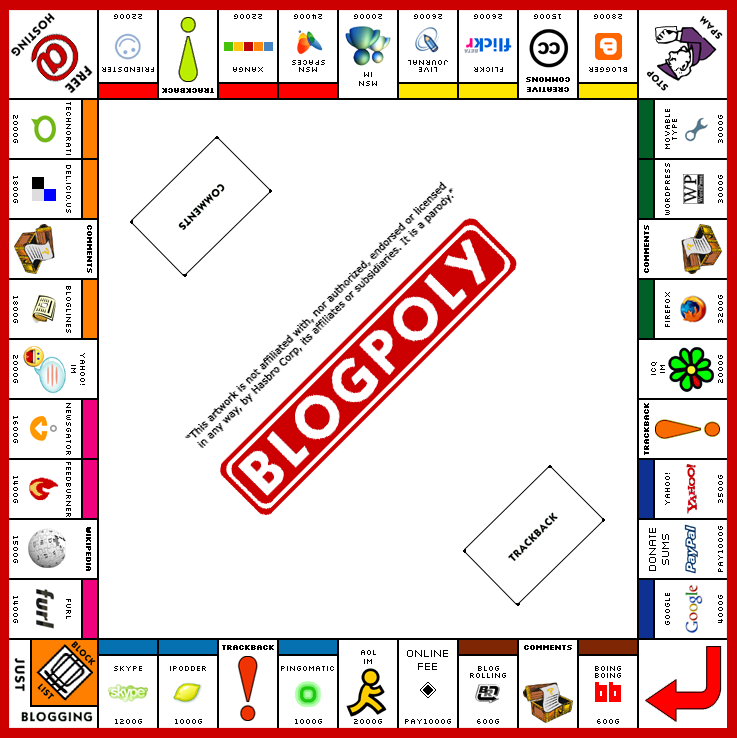A disruptive change of face for IPTV
A disruptive change of face for IPTV
By Daniel Briere and Patrick Hurley, Network World, 05/24/05
Briere
So by now, a very large audience of carriers has determined that IPTV is the way to go as they move towards a fully converged network of offerings. The pace of development has been furious, with most deployments focused on plain vanilla TV service, possibly with a little spice of interactivity thrown in.
Well the most disruptive technologies usually start with a simple demonstration. At Walt Mossberg’s D Conference this month, we think that such a demonstration happened, and that it is going to have an order of magnitude change on the face of IPTV as we know it. A small company with telco-equipment roots, Hillcrest Labs, showed for the first time publicly its new HoME navigation system for the TV.
Big deal. From Moxi to MicrosoftTV2 to ATI’s HDTV Wonder to all sorts of interfaces, people have been trying to remake the image of the TV to make it a bigger and better home for the next generation of revenue-generating services. Indeed, there are a lot of players pounding the pavement, each trying to get the attention of the people holding the big IPTV franchise purse strings. However, it is essential that telcos differentiate their offerings if they want to get real traction in the market. Just a “redo” of the cable TV experience isn’t going to cut it.
Hillcrest is different, and any telco player who has the opportunity to see it work up close will realize how dysfunctional their existing approach to IPTV is. HoME is that much of a disruptive force for applications being driven on the TV.
Harken back to the days of the first computers and the land of gargantuan machines and garage startups, and figuring out what works on the latest processors and screens and how to make computers usable. Companies were truly making orders of magnitude shifts in the way people interacted with the computer.
When people look back over the history of computers, a few disruptive changes rise to the very top. Few can doubt that the advent of the IBM Model 1 PC changed the face of computing in our lifetimes by making a computer something that could sit on a desktop. How about the invention of the portable PC – a laptop to match?
Certainly right up there, if top of the list, is Douglas Engelbart’s invention of the Mouse. He took something that was the domain of engineers – complete with command line codes and search strings – and added a whole user interface that changed the face, literally, of computing. We’re just glad they did not stick with the original name: “X-Y position indicator for a display system.”
For an idea of how lost we’d be with out the mouse, look at your keyboard right now. Look at the up/down/left/right buttons. And try to imagine doing all your work using just those buttons to navigate. Try to imagine browsing for products at Amazon.com without the mouse to move around the page easily and select whatever you want. Ever copy and paste from an article on the screen? Think how painful that would be using directional keys. Point. Click. It’s more than a technology; it’s part of our life.
Enter Hillcrest Labs. By now, you probably have seen the pictures of their ‘Loop’ and their HoME ‘Spontaneous Navigation’ products. Hillcrest’s is the first offering that has the potential to truly change the way we viewers interact with our TVs. In fact, Hillcrest’s navigation technology will be as disruptive to the television set as the mouse and Windows were to the computer.
It will allow you to go wherever you want to go whenever you want to go there – you are not limited to the two-dimensional interface of present TV navigation schemes. Think of how you navigate your TV guide – up a few rows, over a few boxes. Same for anything on the system. It works for a few lines in a TV guide, but what about 50,000 movie titles or all of your personal photos? It falls apart quickly. The ability to zoom, hover, pan, drill down, spontaneously move…these elements are standard if not the lifeblood of computer apps, but no where in present IPTV implementations.
You might be thinking, “What about Gyration, or Light guns, or any of these other peripherals that have come out before?” These products were like the early attempts to cross the Atlantic by plane – they started the trip, but failed to make it; Charles Lindberg was the first because he put everything together to make it happen. Hillcrest reaches all the way to the bottommost part of the food chain – the metadata that ties everything together – and then carries that forward all the way to applications, the screen, and the device. This threaded approach is what makes Hillcrest solve the problem in an integral and converged way.
You can’t get to full convergence with just a pretty and fancy screen, you really need the underlying elements to be integrated so you can truly have application-independent navigation. You also have to allow the user to use the same navigation and interface with all applications on the TV.
This usability separates a truly landmark navigation improvement from the others – something that is so intuitive that users ‘get it’ within seconds of using it. Hillcrest’s technology is intuitive to even a technophobic grandma. Gone are the 180+ buttons on a remote control. We’ve entered the age of true ease of use for any application on the TV. With Hillcrest’s Spontaneous Navigation products, any computer application now can easily find a home on the TV, and new revenue-generating applications on the TV have a framework for quick introduction. The results will be stunning to users and IPTV pocketbooks – because there’s a direct line between the two.
By Daniel Briere and Patrick Hurley, Network World, 05/24/05
Briere
So by now, a very large audience of carriers has determined that IPTV is the way to go as they move towards a fully converged network of offerings. The pace of development has been furious, with most deployments focused on plain vanilla TV service, possibly with a little spice of interactivity thrown in.
Well the most disruptive technologies usually start with a simple demonstration. At Walt Mossberg’s D Conference this month, we think that such a demonstration happened, and that it is going to have an order of magnitude change on the face of IPTV as we know it. A small company with telco-equipment roots, Hillcrest Labs, showed for the first time publicly its new HoME navigation system for the TV.
Big deal. From Moxi to MicrosoftTV2 to ATI’s HDTV Wonder to all sorts of interfaces, people have been trying to remake the image of the TV to make it a bigger and better home for the next generation of revenue-generating services. Indeed, there are a lot of players pounding the pavement, each trying to get the attention of the people holding the big IPTV franchise purse strings. However, it is essential that telcos differentiate their offerings if they want to get real traction in the market. Just a “redo” of the cable TV experience isn’t going to cut it.
Hillcrest is different, and any telco player who has the opportunity to see it work up close will realize how dysfunctional their existing approach to IPTV is. HoME is that much of a disruptive force for applications being driven on the TV.
Harken back to the days of the first computers and the land of gargantuan machines and garage startups, and figuring out what works on the latest processors and screens and how to make computers usable. Companies were truly making orders of magnitude shifts in the way people interacted with the computer.
When people look back over the history of computers, a few disruptive changes rise to the very top. Few can doubt that the advent of the IBM Model 1 PC changed the face of computing in our lifetimes by making a computer something that could sit on a desktop. How about the invention of the portable PC – a laptop to match?
Certainly right up there, if top of the list, is Douglas Engelbart’s invention of the Mouse. He took something that was the domain of engineers – complete with command line codes and search strings – and added a whole user interface that changed the face, literally, of computing. We’re just glad they did not stick with the original name: “X-Y position indicator for a display system.”
For an idea of how lost we’d be with out the mouse, look at your keyboard right now. Look at the up/down/left/right buttons. And try to imagine doing all your work using just those buttons to navigate. Try to imagine browsing for products at Amazon.com without the mouse to move around the page easily and select whatever you want. Ever copy and paste from an article on the screen? Think how painful that would be using directional keys. Point. Click. It’s more than a technology; it’s part of our life.
Enter Hillcrest Labs. By now, you probably have seen the pictures of their ‘Loop’ and their HoME ‘Spontaneous Navigation’ products. Hillcrest’s is the first offering that has the potential to truly change the way we viewers interact with our TVs. In fact, Hillcrest’s navigation technology will be as disruptive to the television set as the mouse and Windows were to the computer.
It will allow you to go wherever you want to go whenever you want to go there – you are not limited to the two-dimensional interface of present TV navigation schemes. Think of how you navigate your TV guide – up a few rows, over a few boxes. Same for anything on the system. It works for a few lines in a TV guide, but what about 50,000 movie titles or all of your personal photos? It falls apart quickly. The ability to zoom, hover, pan, drill down, spontaneously move…these elements are standard if not the lifeblood of computer apps, but no where in present IPTV implementations.
You might be thinking, “What about Gyration, or Light guns, or any of these other peripherals that have come out before?” These products were like the early attempts to cross the Atlantic by plane – they started the trip, but failed to make it; Charles Lindberg was the first because he put everything together to make it happen. Hillcrest reaches all the way to the bottommost part of the food chain – the metadata that ties everything together – and then carries that forward all the way to applications, the screen, and the device. This threaded approach is what makes Hillcrest solve the problem in an integral and converged way.
You can’t get to full convergence with just a pretty and fancy screen, you really need the underlying elements to be integrated so you can truly have application-independent navigation. You also have to allow the user to use the same navigation and interface with all applications on the TV.
This usability separates a truly landmark navigation improvement from the others – something that is so intuitive that users ‘get it’ within seconds of using it. Hillcrest’s technology is intuitive to even a technophobic grandma. Gone are the 180+ buttons on a remote control. We’ve entered the age of true ease of use for any application on the TV. With Hillcrest’s Spontaneous Navigation products, any computer application now can easily find a home on the TV, and new revenue-generating applications on the TV have a framework for quick introduction. The results will be stunning to users and IPTV pocketbooks – because there’s a direct line between the two.


 AquaDock
AquaDock


